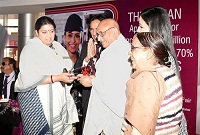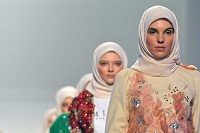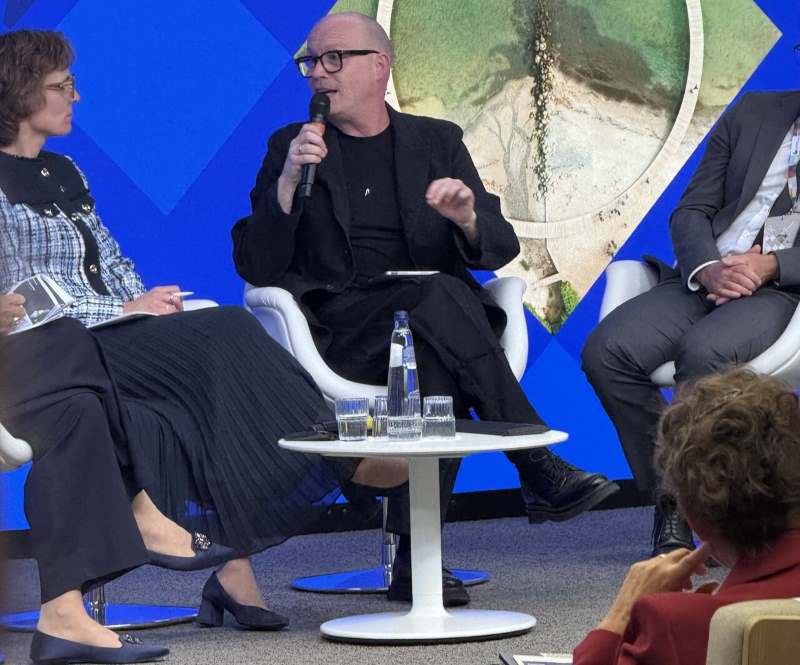FW
Xinao Textiles, based in China, has opened in Italy. This will be not only a commercial facility but a development and production center crucial for strengthening its position in Europe. The company will be a benchmark for Italian and European textile market, guaranteeing rapid manufacturing times and products in line with its taste and demands. The aim is to become the collector of the European fashion market’s ideas and trends, to interpret its taste and needs and offer a rapid, competitive service.
The subsidiary is located in a part of Italy that is an international wool yarn center. Xinao will integrate itself with the local textile services industry to create a product with Italian taste and high added value. Xinao Textiles, founded in 1991, is one of the world leaders in the worsted wool spinning industry. About 80 per cent of its market is external knitwear and 20 per cent circular knits and socks. The secret of its success lies in its totally integrated production chain: from its own farm in Australia, which supplies part of its wool requirements, to all combing, treatment, dyeing and spinning stages. Meticulous selection of raw materials means it is now a leader in fine and extra-fine yarns, manufacturing a product with international appeal.

Optimism in the air
The general mood among exhibitors was positive with most expecting business to pick up in the coming months. “Old time business system has gone and we are looking for new ventures and methods of approaching customers to sell our products,” explained Kaushik Pandya, a visitor. “Overall, exports grew 36 per cent. We grew from about $3.1 billion to $3.7 billion, an encouraging growth indeed,” opined Rahul Mehta, President, CMAI. “There are issues and obstacles related to cooperation between the government and the industry but we look forward to better performance in coming quarters,” he added.
Rooting for GST
Talking about GST refunds, Mehta said, “Investments in an economy do not decline on GST reduction or taxation, rather increase in taxes adversely impacts the taxes. GST has been introduced fairly smoothly. It is still evolving and the government is taking steps to correct mistakes or reroute their paths.” He emphasized the government should refund GST immediately as capital is blocked. Vasant Kumar of YKF brand also agreed GST has made things transparent.
Rigid policies need of hour
Another topic of discussion at the fair was the US-China trade war. Speaking about it Kumar said both countries have negotiated as US cannot survive without China. Only India felt neglected as the benefit that should have been given to India has been taken away by Vietnam and Bangladesh. There have to be rigid policies irrespective of the government only then we can move ahead.”
"To discover how satisfied professionals working within the fashion industry are with their jobs, Business of Fashion surveyed over 1,400 fashion professionals and further analysed a sample set of 418 respondents — working in the UK, the US, France, Italy and Germany. The survey showed, majority of fashion industry is satisfied with their jobs, with 54 per cent respondents classifying themselves as such. Indeed, in line with these statistics, almost a fifth of individuals working in the industry — a full 19 per cent — are very satisfied with their job. However, over 20 per cent of those surveyed were actively dissatisfied with their employment, with 7 percent identifying as very unsatisfied with their role."
 To discover how satisfied professionals working within the fashion industry are with their jobs, Business of Fashion surveyed over 1,400 fashion professionals and further analysed a sample set of 418 respondents — working in the UK, the US, France, Italy and Germany.
To discover how satisfied professionals working within the fashion industry are with their jobs, Business of Fashion surveyed over 1,400 fashion professionals and further analysed a sample set of 418 respondents — working in the UK, the US, France, Italy and Germany.
The survey showed, majority of fashion industry is satisfied with their jobs, with 54 per cent respondents classifying themselves as such. Indeed, in line with these statistics, almost a fifth of individuals working in the industry — a full 19 per cent — are very satisfied with their job. However, over 20 per cent of those surveyed were actively dissatisfied with their employment, with 7 percent identifying as very unsatisfied with their role.
UK professionals the most satisfied, Germany, the least
Given the UK’s bleak economic outlook under Brexit uncertainty, it is perhaps surprising that professionals in the country are the most satisfied with their roles out of the five geographies analysed. With 57 per cent respondents satisfied or very satisfied, the UK narrowly beat out the Italian and French industries, who scored satisfaction rates of 56 and 55 per cent respectively. Seemingly, London continues its tradition of flourishing in crisis.
On the other side of spectrum, surprisingly given how robust its economy has been, analysing the data through a geographic lens identifies fashion professionals in Germany as the least happy among those surveyed.
US professionals note polarised experiences
The survey indicated, fashion professionals in the US have the most polarised working experience, with 51 per cent satisfied and 30 per cent unsatisfied in their roles. In terms of job satisfaction in fashion, the land of the free and the home of the brave is divided between the haves and have nots. Indeed, despite having the highest dissatisfaction rating in the survey, American entrepreneurs and business owners scored the highest satisfaction rating of any demographic cohort.
terms of job satisfaction in fashion, the land of the free and the home of the brave is divided between the haves and have nots. Indeed, despite having the highest dissatisfaction rating in the survey, American entrepreneurs and business owners scored the highest satisfaction rating of any demographic cohort.
Beginners, senior professionals report most satisfaction
The data by level of seniority indicates some interesting trends. Those at the start and zenith of their careers are notably happier at work. At the top, over 74 per cent of entrepreneurs and business owners would classify themselves as satisfied with their roles, with just 2 per cent stating they were very unsatisfied with their jobs. Similarly, 59 per cent of chief executives described themselves as satisfied or very satisfied.
Interestingly, despite accepted wisdom that individuals at the beginning of the career ladder suffer the most in fashion, the results of the survey indicate that middle and senior management find their employment significantly less satisfying than their juniors. Respectively, 29 per cent and 27 per cent of middle management and senior manager respondents stated they were unsatisfied with their current role, compared to just 16 per cent of interns.
For those looking for most nurturing and fulfilling environments to begin their careers in fashion, the rising specter of Brexit may complicate matters. The industry’s happiest interns are those working in the United Kingdom, while France’s entry-level and junior professionals are the most satisfied globally.
The next edition of Copenhagen fashion show, CIFF, will extend over a 60,000-sq. mt.area and host around 2,000 exhibitors. The show is scheduled from January 30 to February 1 at the Bella Centre. Of the total exhibitors, 250 will exhibit at CIFF Youth, nearly 500 in the showrooms adjoining the show, reserved for labels which receive buyers by appointment during their sales campaign, and over 1,000 will exhibit at CIFF proper, featuring womenswear, menswear, urbanwear, footwear and accessories labels, ranging from affordable to premium brands.
CIFF Kids, the show’s childrenswear counterpart will move to the Bella Centre and join the main CIFF event. The show, now rechristened CIFF Youth, is well-established in the European childrenswear scene, and creates new synergies by being held together with the adult event. For this season, CIFF Youth will have its own separate entrance and space, but by next summer the boundaries are expected to disappear.
Knitwear brands and heritage labels have increased their range of all-wool designs. Italian labels with pedigree are stepping out on new paths. Old ways of rearing local sheep for wool and natural dyeing are being explored.
Menswear autumn/ winter 2019-20 layers cosy, comfortable clothes with serious performance in warm high-quality fabrics. Looks ranged from tough, rugged and ready for the outdoors, accessorised with ice-axe, ropes and boots, to a sporty, colorful approach, some featuring flocked logos on knit blousons, stripes and badges, techno features mixing technology with challenge, referencing skiwear old and new.
Wool benefits from the growing use of information and naming of fabric, fiber and its origin; from thick and chunky yarn grown and processed in northern countries and islands, Harris Tweed, Shetland, Finland and Ireland, to fine wool from Australia, New Zealand, South Africa and Argentina, examples being Escorial soft scarves, Finnish wind-cheating Merino accessories, Spanish on-trend jumpers, Merino inner layers worn next to skin, Irish craft knits.
Many wool fabrics are teamed up with the latest membranes, finishes or fleece-filled duvet jackets. The colorful trend for large and bold pattern seen earlier in the year at important fabric and yarn shows have evolved into stripes, checks, plaids in bright colors like yellow, red, black.
For the third quarter Welspun’s net sales were Rs 459.47 crores as compared to Rs 290.39 crores during the earlier period. Net profit was Rs 43.39 crores for the quarter as against Rs 30.97 crores for the earlier quarter. EPS was Rs 2.91 for the quarter as compared to Rs 2.08 for the earlier quarter.
For the whole year, net sales were Rs 459.47 crores as compared to Rs 324.28 crores during the previous year. Net profit for the year was Rs 43.39 crores as against Rs 15.54 crores for the earlier year. EPS for the year was Rs.2.91 as compared to Rs 1.03 for the earlier year.
For the nine month period net sales were Rs 1129.90 crores as compared to Rs 750.08 crores during the earlier period. Net profit for the nine month period was Rs 97.14 crores as against Rs 44.13 crores for the earlier period. EPS was Rs 6.53 for the nine month period as compared to Rs 2.98 for the earlier nine month period.
Welspun is looking to double its revenues in five years. The company sells home textiles, including rugs, towels and bed sheets, to international retailers. Welpsun also has the Christy’s brand, which sells the iconic Wimbledon towels.
The Union textiles ministry released HSN codes for technical textiles that is expected to act as a catalyst for achieving the market size of up to Rs 2 lakh crore by 2020-21. These are expected to benefit 900 million farmers in the country. The ministry has also set up Focus Incubation Centers to help the potential investors to enter into technical textiles. It has undertaken 40 geo textile projects for roads, water reservoirs and ensured that farmers embrace agro tech at 54 agro tech demonstration centre and distribute kits, which basically tells them how to use agro tech in their day-to-day working across the country.
The ministry had also constituted a committee under V K Saraswat to give recommendation on research and development plan for the future growth of technical textile and is specially preparing a way forward for high perform ace specialty fibers in India.
Tech and fashion are merging together to create smart textiles without sacrificing style, comfort and practicality. Fashion is in a constant state of evolution. Technological advancements are only accelerating this concept.
Fabrics change colors in response to the wearer’s breathing patterns. Fabrics with nanotech treatments turn resistant to water, stains, and wrinkles. More people are wearing smart clothing in gyms. The materials that make up smart fabrics can range from high-grade polymers for maximum comfort to threads equipped with tiny sensors that respond to stimuli and perform a specific function. So yoga pants vibrate to guide the wearer through correct yoga poses. Running shorts connected to a smartphone can provide running-specific metrics such as cadence, pelvic rotation, and stride length.
Athletes wear kits with built-in micro massagers that facilitate faster muscle recovery. These products, along with posture-correcting shirts and tracker-enabled sports bras, are geared towards enhancing fitness routines, preventing injury, and helping with physical rehabilitation.
Denim jackets can provide directions, change the songs on the smartphone, and even make dinner reservations. Another is an energy-harvesting fabric where the fibers are created with solar cells that can collect and store energy from the wearer’s movement. It then generates electricity, which can essentially turn trousers into a portable outlet.
The lace fabric industry is a classic niche market, somewhat isolated from macroeconomic factors and even apparel industry issues. But lace manufacturers, especially in the US, are still impacted by fashion trends and shifts in retail and consumer behavior. They’re also focused on flexible, timely delivery, with an eye toward sustainable production practices said lace manufacturers, exhibiting at Premiere Vision New York recently.
People have wedding and special occasions no matter the conditions. But that doesn’t mean that the lace business isn’t affected by market conditions. For one, consumers are buying more direct-to-market. This has led the lace sector to have more in-stock availability and shipping capabilities. Changes in traditional store channels can mean dealing with price pressures or the loss of distribution channels.
Delicate, lightweight lace with sparkle effects and floral designs are driving the business. But antique lace with patterns inspired by 18th century styles are also getting attention, done in fresh subdued colors like muted navy, khaki and light gray. Novelty looks are also important, such nautical motifs, raised dot and floral overlay laces, abstracts and lightly glittered patterns.
The traditional lace market has expanded beyond special occasion dresses and lingerie into areas such as daytime apparel, where it’s used as trim. Novelty laces are strong, often mixed with mesh.
Canopy has once again ranked the Lenzing Group number one producer of wood-based fibers (among 31 globally) for responsible procurement of wood, the key raw material in cellulose fiber production. This is the conclusion of the Hot Button Report published recently by the Canadian environmental organization Canopy. Lenzing is a top rated producer of wood-based fibers. Wood is the key raw material in cellulose fiber production.
Responsible sourcing and sustainability are key elements of Lenzing’s corporate strategy. The company gives priority to sustainable wood and pulp sourcing and has practices in place to prevent the use of wood and pulp from ancient and endangered forests.
There is a low risk for buyers using Lenzing fibers. In 2018, Lenzing adopted additional due diligence measures when sourcing from high-risk countries. Lenzing’s innovative Tencel Lyocell fibers with Refibra technology, in which cotton scraps are partly used as a raw material, take the pressure off the use of wood as a raw material. Refibra technology is the most advanced concept in the wood-based fiber market that incorporates circular economy features on a commercial level. Lenzing has helped advance a conservation legacy in the heart of Canada’s boreal forest.
Lenzing produces high-quality fibers and filaments from wood with environmentally friendly and innovative technologies. These fibers form the basis for a wide range of textile and nonwoven applications and are also used in work and protective wear and in industrial applications. This is the only company in the world which produces significant volumes of all three wood-based cellulose fiber generations.












